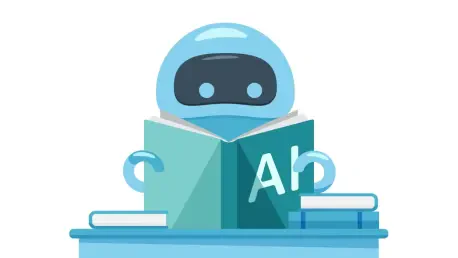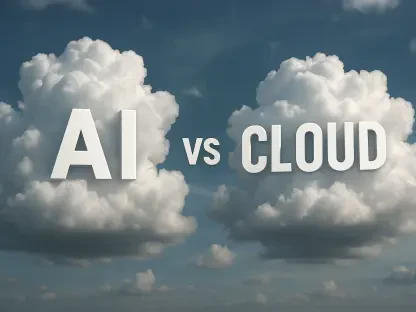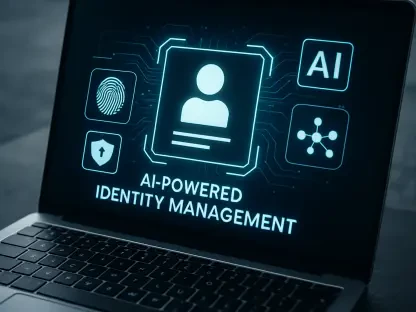In an era where digital services underpin almost every aspect of modern life, the integrity of software systems, especially those handling sensitive information, is paramount. Lapses in the software development process can lead to unintended and often humorous outcomes, but the consequences are no laughing matter when reputations and security are at stake. The journey towards securing code integrity hinges significantly on the advancements in artificial intelligence, which is increasingly seen as a guardian against such errors. AI’s intervention has shown promise not merely as a reactive tool for damage control but as a proactive sentinel, its precision and speed offering promising solutions for ensuring software remains free from unwelcome surprises.
The Incident that Unveiled a Hidden Error
A Glitch with Unexpected Repercussions
Within a European development firm engaged in high-stakes government projects, an intriguing incident underscored the latent vulnerabilities in software safeguarding. A seemingly minor bug, left unchecked, suddenly transformed into a PR disaster for a high-profile client. What began as a tooltip embedded inadvertently some years before within the code by an enthusiastic yet inexperienced developer evolved into a potential debacle. Its surfacing spurred immediate speculation of a cyberattack, threatening to mar the polished image of the reputable client. The developer’s team, upon unraveling the mystery, discovered the oversight had slipped through multiple review processes, a testament to inefficiencies in their current quality control protocols. This humorous yet sobering story amplified the conversation about the necessity for robust checks in preventing errors that might appear trivial but have far-reaching consequences.
Lessons on Code Quality and Oversight
The unfolding of this glitch shed light on the importance of meticulous scrutiny in preserving the professionalism of impactful software applications. It highlighted a prevalent issue in the tech industry: the fragility of systems reliant excessively on human judgment. The journey from a harmless blunder to a potentially damaging situation illustrated a dire need to re-evaluate the methods through which software quality is ascertained. Collaborative code inspections emerged as crucial to prevent individual errors from being lost in the complexity of extensive codification. This incident serves as a reminder that even the most seasoned professionals cannot solely uphold the safety net of quality assurance. The reliance on collaborative efforts and vigilant systems is indispensable for maintaining client trust and meeting high developmental standards.
Adoption of AI for Quality Assurance
Introducing Machine Learning to Detect Anomalies
In response to the wake-up call, the European developer team sought to leverage cutting-edge technology. They introduced a machine learning solution aimed at identifying potentially inappropriate or objectionable content, an effort to reinforce their systems against such oversights in the future. This tool, designed for profound static analysis, serves as an automated sentinel, highlighting content anomalies before they transition into public errors. The integration of AI-driven analysis into code review processes marks a pivotal transition from manual, error-prone examinations to more efficient, precise evaluations. With the promise of refining quality assurance workflows, AI emerges as not just an adjunctive tool but a necessity for modern software developers aiming to adhere to exemplary ethical and quality standards.
AI’s Evolving Contribution to Code Review
The incorporation of AI in the domain of software development has ushered in a new era where technology augments human efforts in maintaining impeccable code quality. The precision of machine learning algorithms in sifting through vast codebases allows developers to identify and rectify potential missteps seamlessly, minimizing the chances of public outrage due to overlooked errors. AI’s capability to perform exhaustive and consistent checks offers a buffer against unforeseen lapses that could otherwise slip through manual inspections. The story underlines an industry-wide shift towards harnessing AI not just as a fixative measure but as a keystone in preventive strategies aimed at sustaining development integrity. This evolving landscape attests to the growing preference for technology-assisted quality enforcement as the bedrock of software reliability and client trust.
A Future Fueled by AI’s Vigilance
In today’s digital age, where technology is deeply embedded in our daily lives, the integrity of software systems, particularly those managing sensitive data, is crucial. Software development missteps can lead to unforeseen and sometimes amusing outcomes, but the implications are serious when they involve reputational damage or security breaches. Ensuring the security of code integrity is heavily dependent on the evolution of artificial intelligence, which is increasingly recognized as a vital safeguard against such errors. AI’s role is promising, not just as a reactive mechanism for managing problems after they occur, but as a proactive protector, offering precision and speed to help maintain software free of unwelcome issues. With its ability to anticipate and prevent potential vulnerabilities, AI is transforming the landscape of software development by ensuring higher standards of security and reliability, thus protecting both the developers and the stakeholders’ interests in a rapidly evolving digital world.









